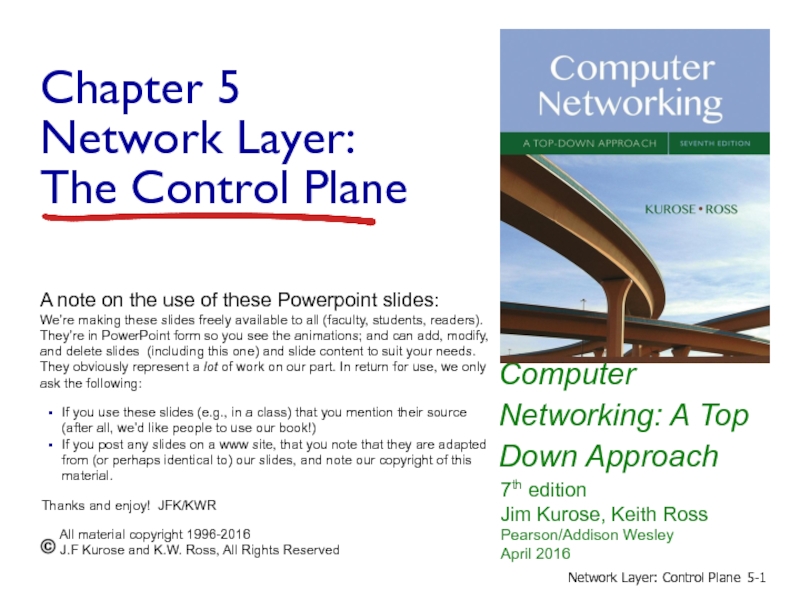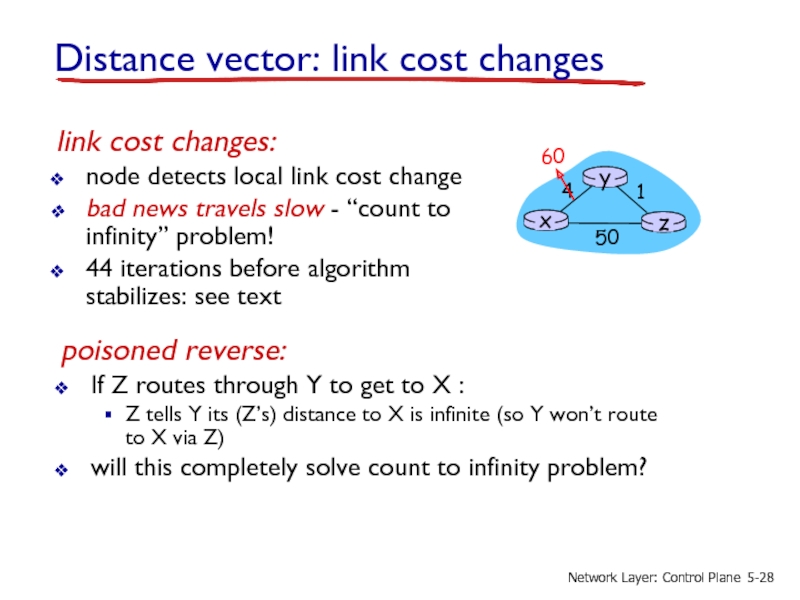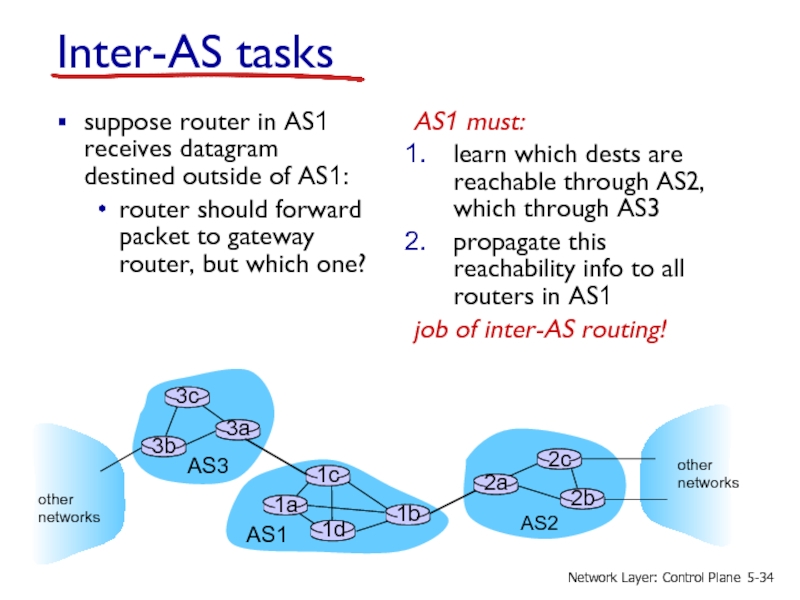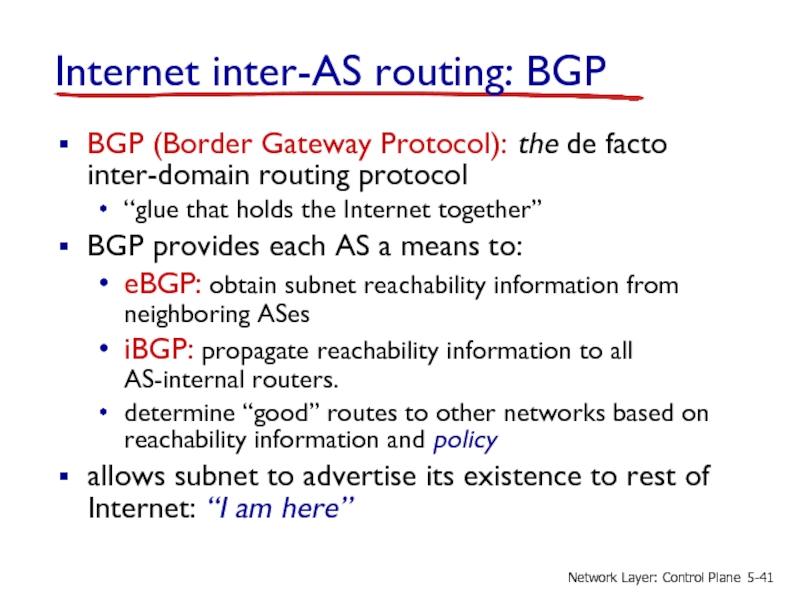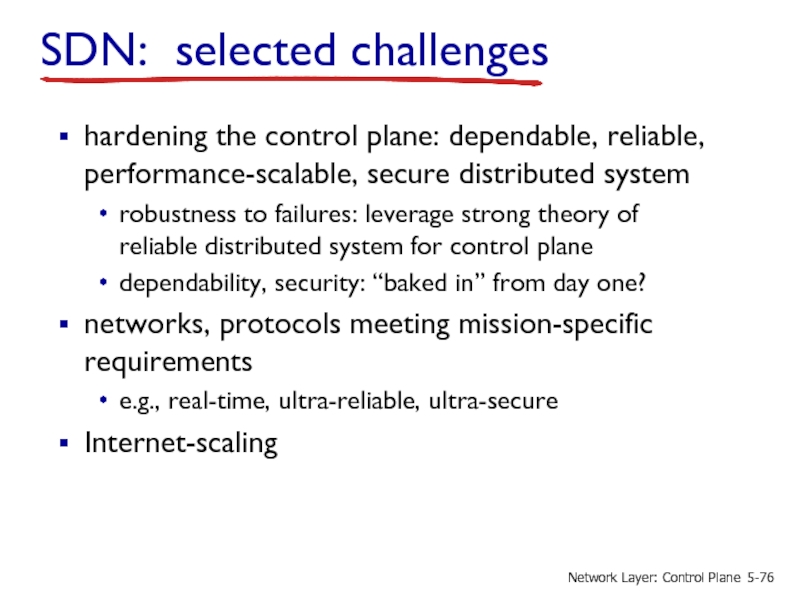We’re making these slides freely available to all (faculty, students, readers). They’re in PowerPoint form so you see the animations; and can add, modify, and delete slides (including this one) and slide content to suit your needs. They obviously represent a lot of work on our part. In return for use, we only ask the following:
If you use these slides (e.g., in a class) that you mention their source (after all, we’d like people to use our book!)
If you post any slides on a www site, that you note that they are adapted from (or perhaps identical to) our slides, and note our copyright of this material.
Thanks and enjoy! JFK/KWR
All material copyright 1996-2016
J.F Kurose and K.W. Ross, All Rights Reserved
7th edition
Jim Kurose, Keith Ross
Pearson/Addison Wesley
April 2016
Chapter 5
Network Layer:
The Control Plane
5-
Network Layer: Control Plane
